Photos: White Sands National Monument
A big place
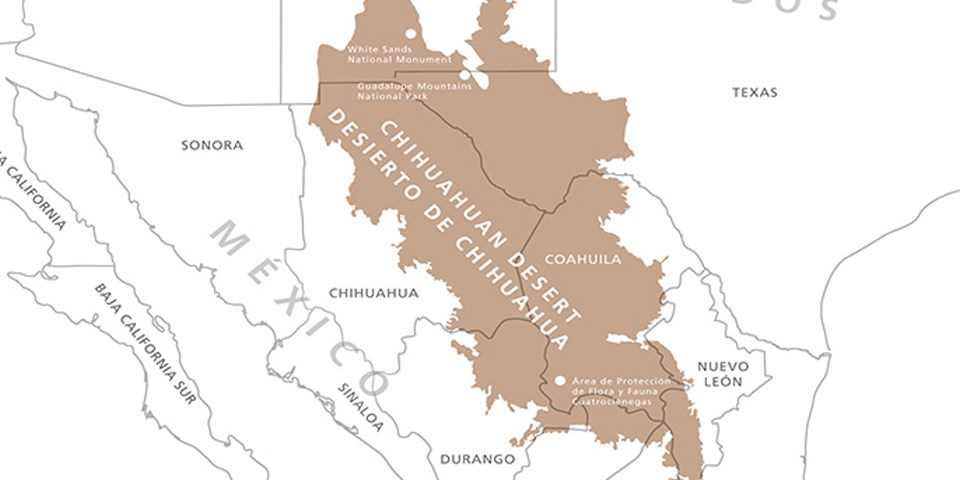
The Desierto de Chihuahua is the largest desert in North America as it covers over 200,000 square miles (517,998 square kilometers) and extends deep into the Central Plateau of Mexico. Its many endemic plant species suggest that the desert just might be the most biologically diverse desert in the world. The norther portion of the Chihuahuan Desert projects north of the international border into southcentral New Mexico, creating a rare and vast area of white gypsum sand dunes.
Limited access
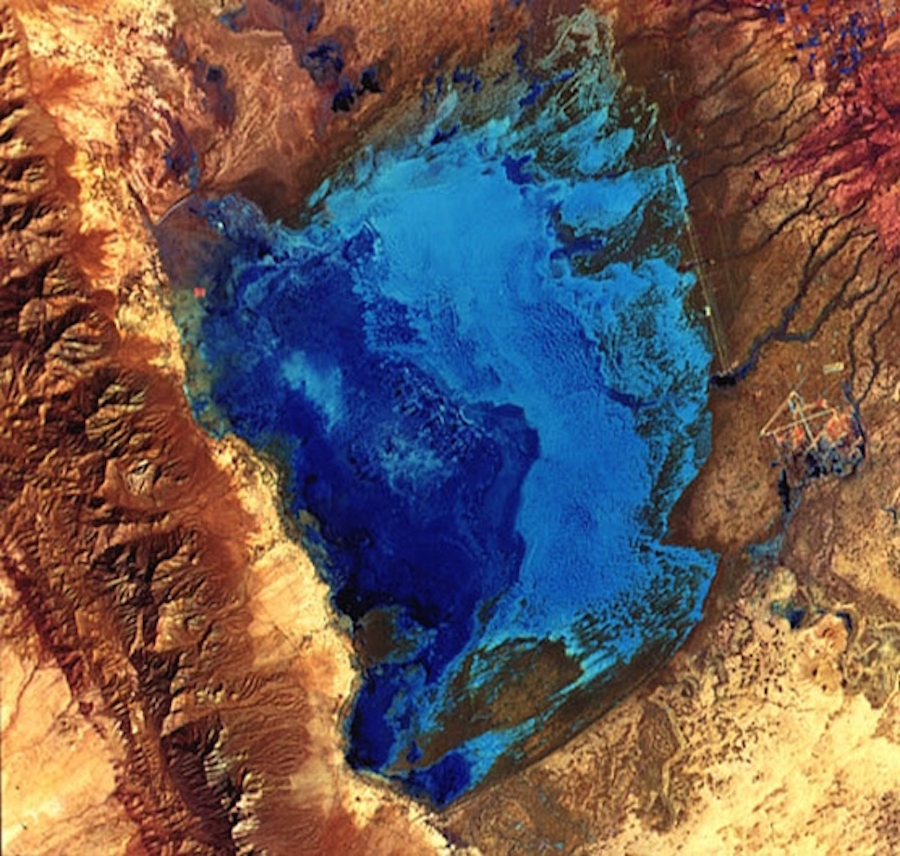
From space, this is the largest gypsum dune field in the world and its accompanying seasonal lake, Lake Lucero, can be seen within an internally drained valley known as the Tularosa Basin. The dune field covers some 275 square miles (712 square km) at an elevation ranging from 3,890 to 4,116 feet (1,186 to 1,255 m). Some 40 percent of the dune field is protected within the White Sands National Monument. The remaining 60 percent of the dunes are within a United States military area and that limits its use by the public.
From here to there
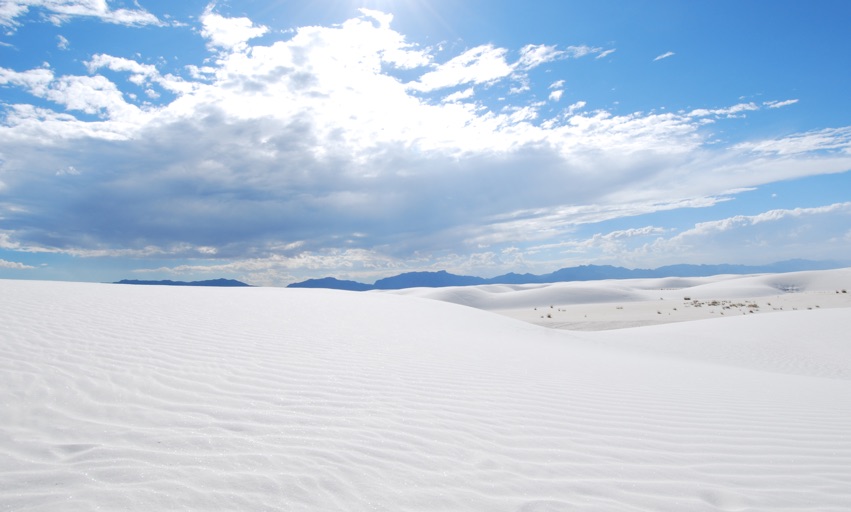
Surrounding the dunes are the San Andres and Sacramento Mountains, the source of the gypsum powdered sand. For many millennia, rains have eroded these mountains, washing the grains of gypsum into the valley and depositing them into Lake Lucero. In the extreme desert heat, the evaporating water of the seasonal lake leaves behind fine gypsum sand, resulting in the prevailing westerly winds blowing the gypsum particles into massive white sand dunes.
Misplaced Beauty
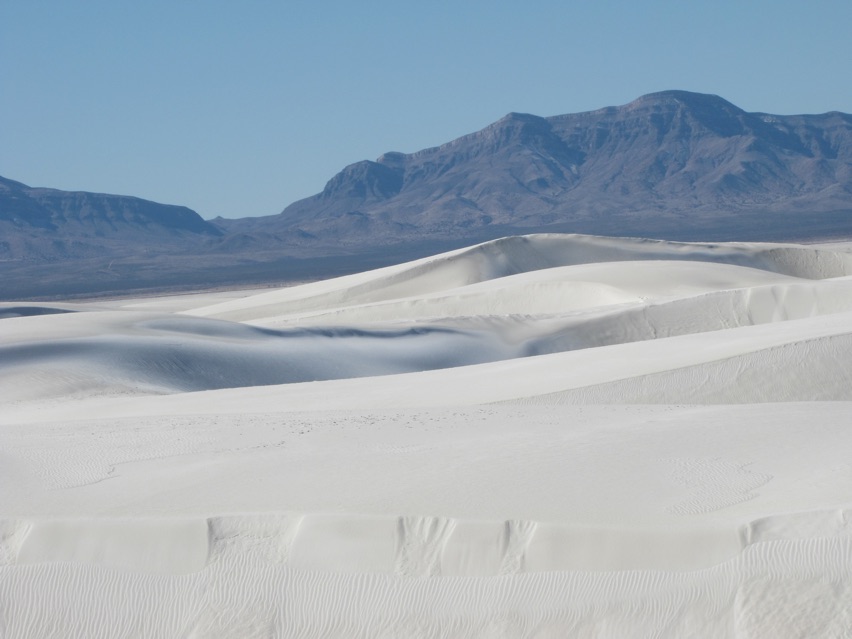
Even though gypsum is one of the most common minerals found on Earth, seldom is it seen or found on the Earth's surface. That's because gypsum dissolves easily in water. The genesis of this white sand desert began some 100 million years ago when this area of what is now North America was covered by a shallow sea. When the sea receded and the saltwater lakes evaporated, thick layers of salt and gypsum were left covering the ancient seabed landscape.
Years in the making
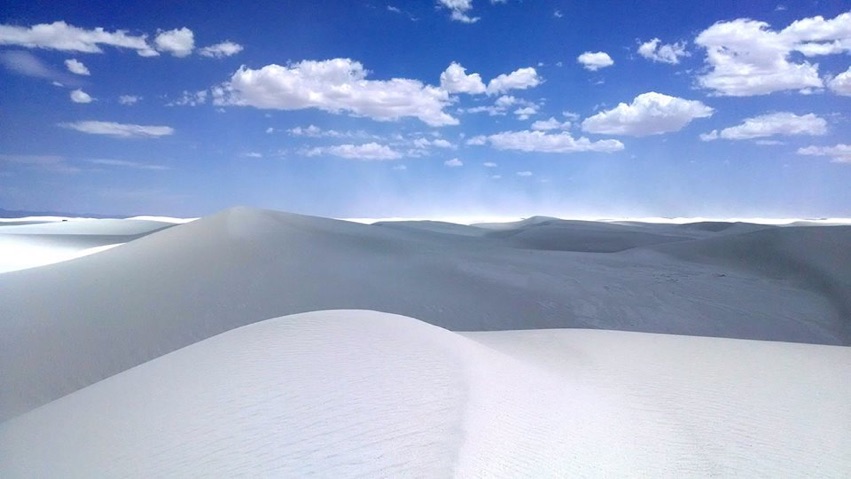
Some 70 million years ago, during a period of regional mountain building, the nearby San Andres Mountains and Sacramento Mountains were uplifted to elevations as high as 9,695 feet (2,955 m). As the mountains rose high above the newly formed Tularosa Basin, so too did the thick deposits of gypsum. Thousands of years of rain and snow dissolved the high mountain gypsum, washing it down the many mountain slopes into the basin where it accumulated in Lake Lucero. When the lake water evaporates, a thin layer of crystallized gypsum, called selenite, was left behind. The continuation of weathering breaks the selenite into crystals of fine grains of gypsum sand, which the winds pile high into steep dunes. Some of the more spectacular dunes can reach a height of 60 feet (18 m).
Unique in the World

Geologists define sand as any substance composed of a mineral between 0.003 and 0.08 inches (0.065 to 2 mm) in diameter. Most of the sand found on Earth is composed of quartz. Most of this quartz sand began as a rock such as sandstone, limestone or granite and over time weathered into the small grains of quartz sand. The white sand dunes of New Mexico are about 98 percent pure gypsum sand and because of the regional aridness of the land, resulted in the massive windblown white sand dunes. Geologists estimate that 4.5 billion tons (4.08 metric tons) of white gypsum make up the 275 square miles of white sand dunes found here.
Living in extremes
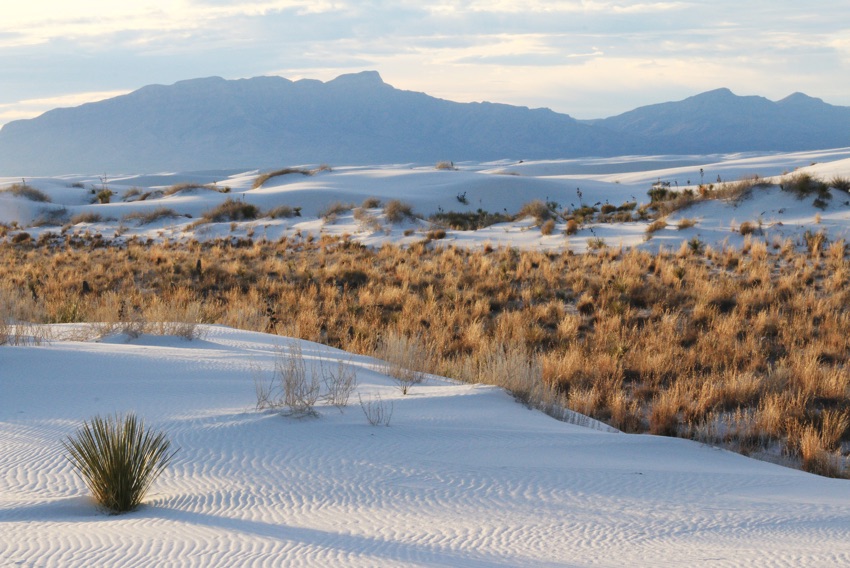
The regions between the dunes are fascinating environments where determined wildlife scrape by a living in the inhospitable environment. The soil found within the dune field ranges from shallow to very deep. Some areas of the inter-dune fields are poorly drained, while other areas drain excessively. The groundwater system found within the basin is complex and scientists still don't complete understand of the system.
Sign up for the Live Science daily newsletter now
Get the world’s most fascinating discoveries delivered straight to your inbox.
Flora of the desert
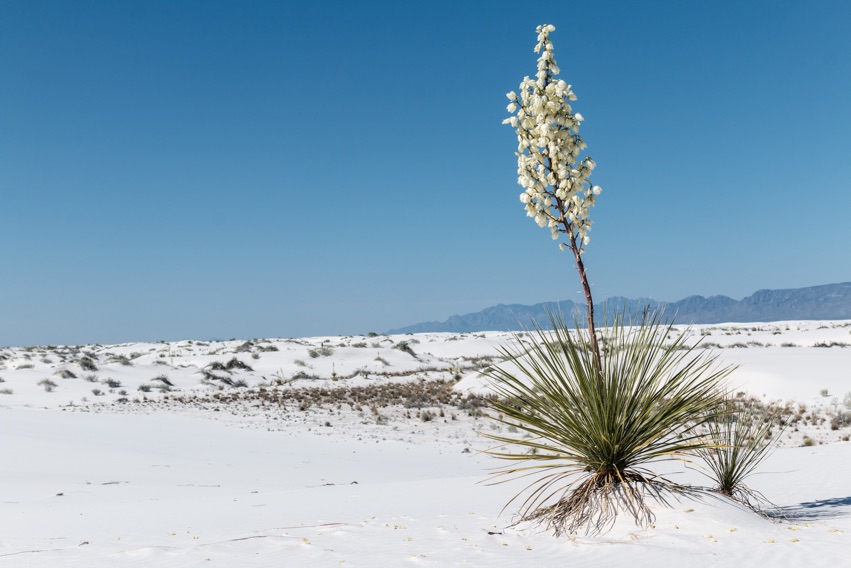
More than 300 species of plants can be found growing in the white sand dune field. They play a critical role in the region's ecology, stabilizing the edges of the dunes and providing both shelter and food for local wildlife. The plants that survive in this nutrient-poor alkaline soil must be able to adapt and endure high soil salt levels, drought and freezing temperatures — minus 100 degrees Fahrenheit (38 degrees Celsius). On the active sand dunes, the dominant species of plants include the soaptree yucca (Yucca elata), shown here, as well as skunkbush sumac (Rhus trilobata), fourwing saltbush (Atriplex canescens) and gyp grama (Bouteloua breviseta).
Home to many

More than 250 species of birds, numerous species of insects, 50 species of mammals, seven species of amphibians, one species of fish and 30 species of reptiles, including this diamondback rattlesnake (Crotalus atrox), make their homes within this unique white sand dune field.
Adapting to the environment

Some animals found within the dune field have adapted and evolved to their harsh white arid environment. The Apache pocket mouse, Perognathus flavescens apachii, with its almost white fur, is harder for predators to see among the white sand dunes. Since more of the white-furred pocket mice survive, relative to mice with non-white fur, they pass the genes for white fur on to the future generations of pocket mice. This adaptation to the white sands can also be seen in other species of insects and lizards that make their homes here.
Rare finds
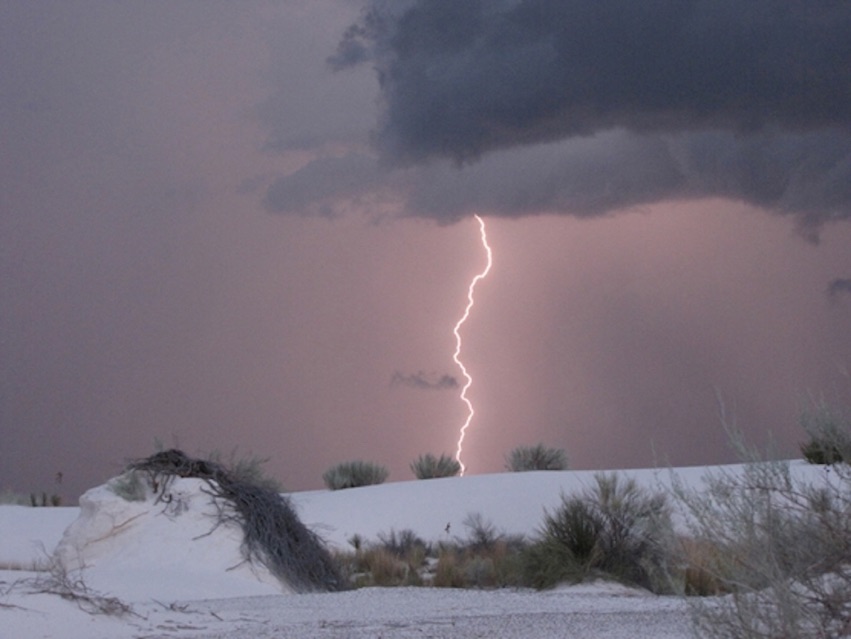
The uniqueness and raw beauty of the white sand dunes have long been recognized. The idea of preserving the area from development started as early as 1898, when a group of El Paso, Texas community leaders proposed the formation of Mescalero National Park. That idea failed, but in 1933, President Herbert Hoover sought to preserve the area under the Antiquities Act of 1906 with a national monument designation. Today, over 500,000 people come to the white sands to explore and experience this unique natural wonder every year.










